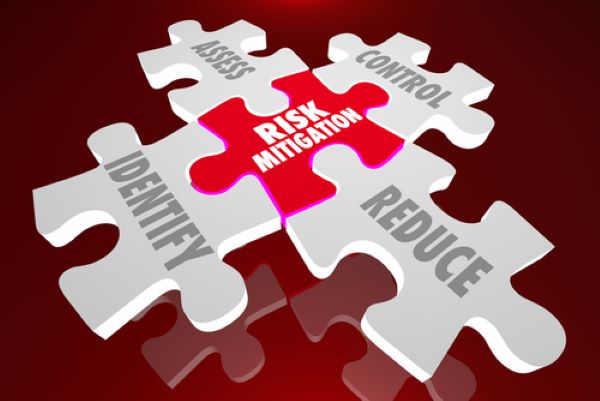 |
| By | May 1, 2024 |
Businesses of all sizes face various risks. This could include theft, property damage, and legal claims. Commercial insurance can help manage them efficiently. However, it’s important to balance coverage and costs while choosing the plans. Read on, as this guide will help you learn how to reduce risks and the total cost of your commercial insurance. Factors Influencing Premiums Commercial insurance is very helpful for companies that don’t have enough cash to cover major losses. There are several options tailored to your unique business needs, ranging from general liability to workers’ compensation. The total coverage costs will depend on the amount of risks. For instance, business interruption will replace lost income if operations are interrupted. It can cover both the loss of property and income. Your insurance premium will also vary depending on other factors. Some of them include: Steps to Mitigate Risks The key to managing insurance prices is understanding the effects of risks and taking steps to reduce them. The following measures can help you do this efficiently: 1. Conduct a Thorough Assessment Determine any weak points in your company’s operations before selecting an insurance plan. This aids in your decision-making regarding the type of coverages you require….

Businesses of all sizes face various risks. This could include theft, property damage, and legal claims. Commercial insurance can help manage them efficiently. However, it’s important to balance coverage and costs while choosing the plans.
Read on, as this guide will help you learn how to reduce risks and the total cost of your commercial insurance.
Factors Influencing Premiums
Commercial insurance is very helpful for companies that don’t have enough cash to cover major losses. There are several options tailored to your unique business needs, ranging from general liability to workers’ compensation. The total coverage costs will depend on the amount of risks. For instance, business interruption will replace lost income if operations are interrupted. It can cover both the loss of property and income.
Your insurance premium will also vary depending on other factors. Some of them include:
- Industry Risk Profile: The inherent risks of various verticals vary. For instance, construction or healthcare businesses may incur numerous losses. It is possible that your rates may be higher if you work in any of these industries.
- History: Your business’ past claims determine its future insurance costs. Insurers will increase premium rates if you have a record of frequent or high-value claims.
- Location: You can expect larger coverage rates in areas with higher rates of crime or natural disasters. For example, living in a region that frequently floods could result in high costs.
- Risk Management Practices: Reducing your risks can positively influence rates. Insurers may provide discounts if you can show improved safety standards and other risk-management practices.
- Limits and Deductibles: Higher premiums be paid if a higher limit is chosen. A larger deductible may reduce premiums. However, you will bear greater responsibility for any covered losses.
Steps to Mitigate Risks
The key to managing insurance prices is understanding the effects of risks and taking steps to reduce them. The following measures can help you do this efficiently:
1. Conduct a Thorough Assessment
Determine any weak points in your company’s operations before selecting an insurance plan. This aids in your decision-making regarding the type of coverages you require. Several elements encompass your sector, including geographical area, workforce size, and type of job. For instance, a restaurant owner needs to think about the risks related to theft, fire threats, and food safety.
2. Implement Risk Management
Develop proactive strategies to reduce your business’s unique risk profile. This may include creating safety protocols, conducting safety training, and investing in new security measures. Managing them before choosing a policy can help you demonstrate that you are actively working to minimize potential losses.
3. Compare Quotes
Make sure you’re not settling for the first insurance option you see. It’s necessary to take the time to evaluate multiple carriers to ensure you get the best coverage value. You should consider factors like limits, deductibles, policy features, and insurer reputation. Another option is to work with an independent agent to find the most valuable solutions for your business.
4. Consider Bundling Policies
Combining your insurance policies with a single insurer often helps you save costs. This is because you can get bundle discounts and streamlined administration options. Merging your commercial property, liability, and other coverages with the same insurer could reduces premiums. Bundling can simplify the management of your insurance portfolio and ensure comprehensive coverage across your business.
5. Optimize Limits and Deductibles
Evaluate your coverage structure to find the right balance between protection and affordability. While increased coverage limits provide more coverage, they also have higher premiums. Consider your business’s risk tolerance and financial capabilities when setting limits. You can also choose higher deductibles to lower premiums. However, you should be able to cover the out-of-pocket expenses.
6. Invest in Security
Proactive steps to prevent losses can help reduce your insurance claim’s frequency and severity. This may include installing security, fire suppression, and surveillance systems. The focus should be on deterring theft and vandalism. This approach can benefit businesses since loss prevention is usually much cheaper than paying for damages.
7. Strengthen Cybersecurity
With cyberattacks increasing, businesses of all sizes can suffer from data breaches and cyber attacks. To reduce these issues, you can install firewalls, encryption, and multi-factor authentication. Updating your systems and software is also crucial to minimizing security flaws. One option is cyber insurance, which offers monetary security against the expenses of data breaches. This may entail paying court costs, administrative penalties, and notice costs to customers.
8. Update Coverage
Since your insurance needs to evolve with your business, you should regularly review your insurance portfolio. The focus is on ensuring it aligns with your current operations, industry regulations, and emerging risks. Work with your broker or agent to adjust the policy structures and limits. You should also explore new coverage options that suit your evolving business requirements.
9. A Good Claims History
A favorable history shows that your business is responsible and less likely to have future losses. Focus on preventing unnecessary claims to qualify for lower insurance premiums. In case of any claims, work closely with your insurer to resolve issues promptly and reduce losses.
10. Good Insurer Relationship
Prioritize developing a relationship of trust that is founded on openness, prompt payment, and effective communication. If you’re not happy with your existing service provider, you might want to check other options.
As a business owner, you may find it difficult to navigate the complicated world of commercial insurance. You shouldn’t hesitate to get help from an experienced insurance agency like Cell Brokerage. Our team can provide valuable insights to help you assess your insurance needs. We also have commercial insurance options tailored to your business’s unique risks and objectives. Contact us to learn more!









